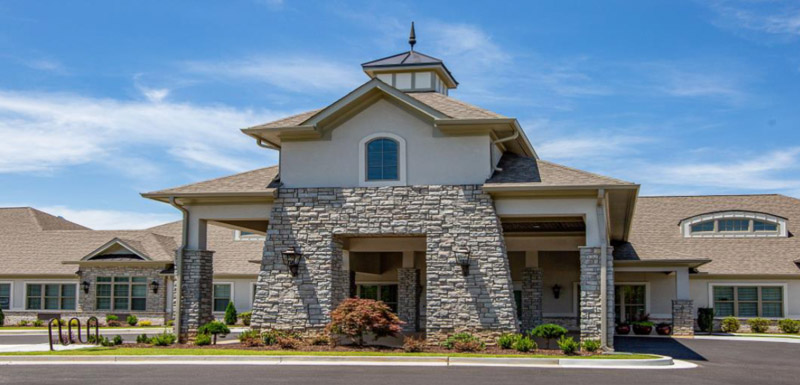The Asset Class of Senior Housing
Despite the fact that the birth rate in the United States has fallen to its lowest level in more than a century, there are still many seniors in need of high-quality housing that meets their unique requirements. Just behind the millennial generation in terms of size, the baby boomer generation is the second-largest. Our civilization is aging as a whole, necessitating more senior housing in the years to come. Over the decade beginning in 2020, the number of persons who will be 75 years old will increase astonishingly by 48.1%, more than double the growth rate from the previous ten years (Source: U.S. Census Bureau projections). The best moment to invest in the asset class of senior housing may be right now.
Senior housing is an enterprise.
Every single day, around 10,000 baby boomers reach the traditional retirement age of 65 (Source: Sen. Rob Portman (R-Ohio), in The Wall Street Journal, July 22, 2014). The next golden years are short-lived. Senior living is a given for many as they approach or attain octogenarian status, despite the fact that some baby boomers are choosing to stay in the comfort of their homes due to the rising cost of home care.
The unpleasant loss of autonomy that comes with aging is also a possible investment opportunity for astute investors. But no two senior housing complexes are alike in terms of their size, style, or value proposition. This unique company's degree of attention and concern is what makes it special. Operators who have the right policies, procedures, and systems in place draw customers as well as devoted personnel. The finest senior living facilities have strong personnel retention rates, which draw more residents and boost revenue.
The average number of units in senior home complexes exceeded 100 as of the beginning of 2021. (106 to be exact). A $34,725,000 average development cost translates to a $269,400 average cost per unit. (Source: CBRE's December 2018 U.S. Seniors Housing Development Costs Report) If you do the math, you'll find that the average cost per square foot in this industry is an amazing $317. As more baby boomers move into senior homes, this number will probably rise much further.
The Advantages of Senior Housing as a Class of Assets
Although it makes sense that the typical investor would be focused on finding the next hot growth stock, senior housing actually has the potential to outperform other asset classes in both the short and long term. According to the research, senior housing has done pretty well as an asset class even throughout economic downturns. As they get older, people frequently look for a social setting with readily available care.
Since more people are living longer than ever, they will stay in senior home for longer than in the past, driving up costs for every level of care. The several degrees of senior living are as follows:
Age 55+
Senior living
dementia care
competent nursing
The words "Senior living" or "senior housing" frequently conjure images of expert nursing in the minds of many people. However, it's critical to thoroughly comprehend the differences because each level of care demands unique operational capabilities and shouldn't be grouped together when determining the return on an investment in senior housing.

There are no two identical senior housing communities.
In terms of care quality and investment appeal, senior home facilities within a single market may range greatly from one another. In other words, each form of senior living facility has unique characteristics and subtleties that should be thoroughly considered and grasped.
Although occupancy rates for senior living vary across the sector, rents are comparatively stable and could rise as the housing crisis plays out in the coming years. In contrast to other types of real estate, senior housing assets have historically offered consistent rates of return.
Invest in Senior Housing with Advice from a Sector Professional
There will likely be more than a 22% increase in the number of Americans over 75 between now and 2025, according to projections. By 2025, more than a million people will have reached that age. As the decade ahead takes shape, it is evident that senior housing will not only be in demand but also perhaps be quite challenging to find (Source: U.S. Census Bureau projections).
The time is now to think about making an investment in this expanding asset class. Get in touch with Perch Wealth right away and invest under the direction of a senior housing industry expert who has in-depth knowledge of this sector, including the advantages and disadvantages of particular operators, to acquire a complete grasp of the potential risks and benefits. Seize the chance to diversify your investment portfolio and benefit from the growing senior housing market.
References
Dale Watchowski, Is Now a Good Time to Invest in Senior Living? (February 9, 2021),
Ecofin, Senior Living - Investing in a growing population (April 9, 2021),
General Disclosure
Not an offer to buy, nor a solicitation to sell securities. Information herein is provided for information purposes only and should not be relied upon to make an investment decision. All investing involves risk of loss of some, or all principal invested. Past performance is not indicative of future results. Speak to your finance and/or tax professional prior to investing.
Securities offered through Emerson Equity LLC Member: FINRA/SIPC. Only available in states where Emerson Equity LLC is registered. Emerson Equity LLC is not affiliated with any other entities identified in this communication.
1031 Risk Disclosure:
- * There is no guarantee that any strategy will be successful or achieve investment objectives;
- * Potential for property value loss - All real estate investments have the potential to lose value during the life of the investments;
- * Change of tax status - The income stream and depreciation schedule for any investment property may affect the property owner's income bracket and/or tax status. An unfavorable tax ruling may cancel deferral of capital gains and result in immediate tax liabilities;
- * Potential for foreclosure - All financed real estate investments have potential for foreclosure;
- * Illiquidity - Because 1031 exchanges are commonly offered through private placement offerings and are illiquid securities. There is no secondary market for these investments.
- * Reduction or Elimination of Monthly Cash Flow Distributions - Like any investment in real estate, if a property unexpectedly loses tenants or sustains substantial damage, there is potential for suspension of cash flow distributions;
- * Impact of fees/expenses - Costs associated with the transaction may impact investors' returns and may outweigh the tax benefits

